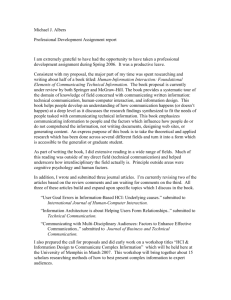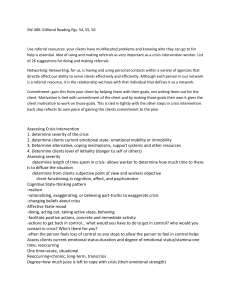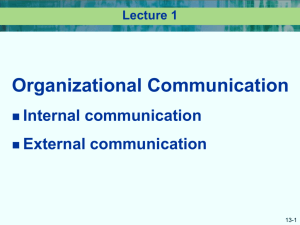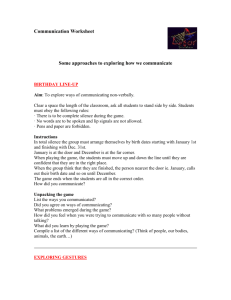communicative orientation in foreign language lessons
advertisement
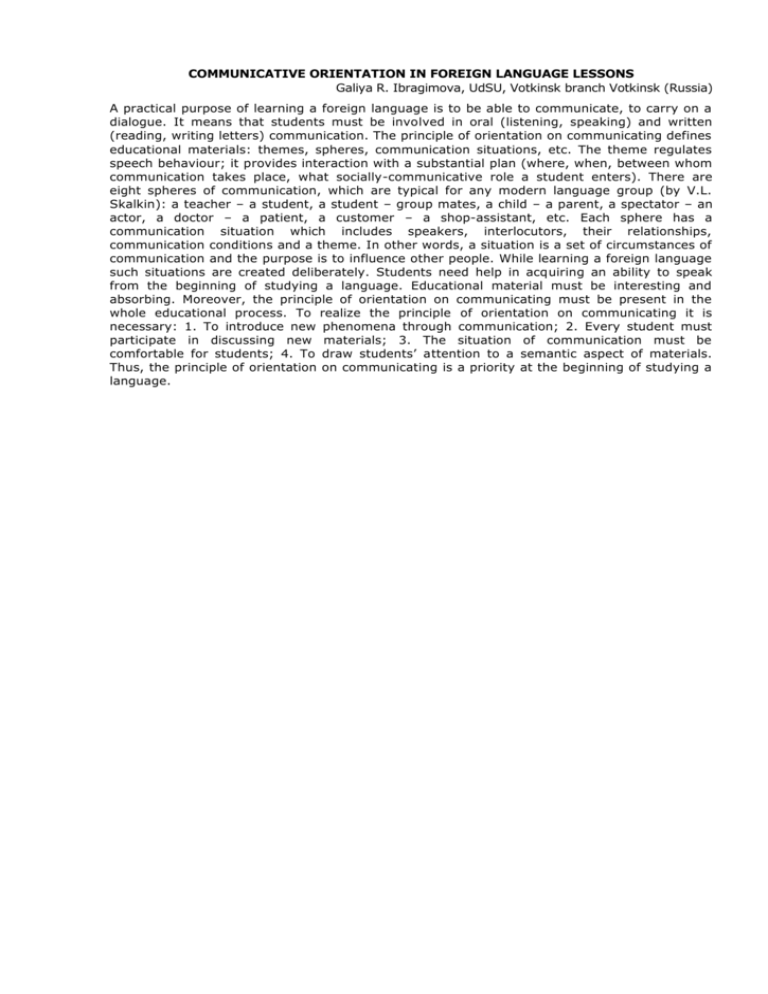
COMMUNICATIVE ORIENTATION IN FOREIGN LANGUAGE LESSONS Galiya R. Ibragimova, UdSU, Votkinsk branch Votkinsk (Russia) A practical purpose of learning a foreign language is to be able to communicate, to carry on a dialogue. It means that students must be involved in oral (listening, speaking) and written (reading, writing letters) communication. The principle of orientation on communicating defines educational materials: themes, spheres, communication situations, etc. The theme regulates speech behaviour; it provides interaction with a substantial plan (where, when, between whom communication takes place, what socially-communicative role a student enters). There are eight spheres of communication, which are typical for any modern language group (by V.L. Skalkin): a teacher – a student, a student – group mates, a child – a parent, a spectator – an actor, a doctor – a patient, a customer – a shop-assistant, etc. Each sphere has a communication situation which includes speakers, interlocutors, their relationships, communication conditions and a theme. In other words, a situation is a set of circumstances of communication and the purpose is to influence other people. While learning a foreign language such situations are created deliberately. Students need help in acquiring an ability to speak from the beginning of studying a language. Educational material must be interesting and absorbing. Moreover, the principle of orientation on communicating must be present in the whole educational process. To realize the principle of orientation on communicating it is necessary: 1. To introduce new phenomena through communication; 2. Every student must participate in discussing new materials; 3. The situation of communication must be comfortable for students; 4. To draw students’ attention to a semantic aspect of materials. Thus, the principle of orientation on communicating is a priority at the beginning of studying a language.


